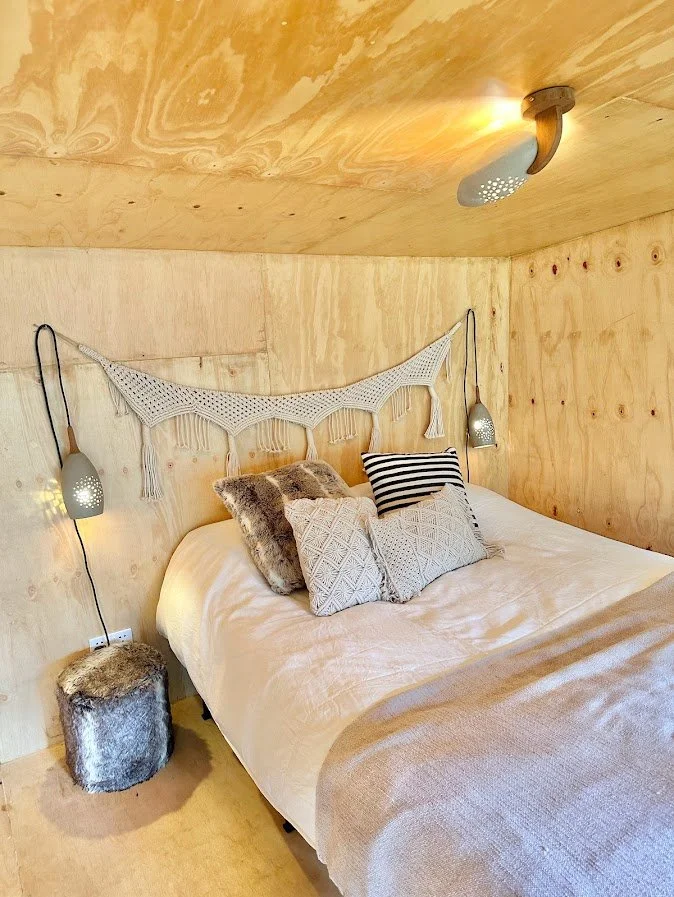The Styles in Our Home
The Formal side of the livingroom - a fusion of Wabi Sabi, Industrial & Biophilic Design
After getting married in Romania, moving to The Netherlands in 2008 and then in Kenya, in 2017, we decided to sell our home in Rotterdam in 2020 and build one in Nairobi merging different sustainability facets and styles. As an intercultural family that has travelled and lived on different continents we have developed a love relationship to everything organic, raw, (hi)story infused and celebrative of cultural heritage. Each culture has an innate beauty of its own and, especially since in Africa, we have discovered the invaluable beauty of the handmade and fully embraced it’s perfect imperfections.
Metal, Concrete, Nature Inspired with Congolese Kuba Cloths turned into cushions and Nigerian Aso Oke fabric into ‘wall/window’ art
From Eclectic, Industrial, Brutalism and Wabi Sabi to the sustainable idea of circularity and using only local materials - except what could fit in the suitcase :) - we wanted to counter the import trend and prove it possible to produce something high-end locally by believing in the potential of the local market. We expected and yearned for a home that would speak of our heritage and styles we love, a canvas for all of the above, released, combined and put into practice through our own designs while at the same time revealing the souls and signature of local craftsmanship.
Eclectic – is a passionate, beautiful dance of diversity in harmony, where every piece tells a story, every color whispers a memory, and every texture shows one’s individuality and taste. It's the art of curating a world that reflects the depth and richness of your life's experiences, where old and new, east and west, blend seamlessly to create a symphony of style that is uniquely and passionately yours.
Vintage Morroccan Rug, Cameroon Ten Bamileke Feathers, Maasai Tribe Blanket Cushions, Silk and Velvet floor cushions from left over fabric
Wabi Sabi – is more than a design style, it’s a philosophy, a way of life that celebrates imperfection, impermanence, texture and the beauty of natural authenticity of raw, unadorned materials while expressing and celebrating life and its transient identity reflected in items old, touched by time with visible grains, chipped paint or vignettes of natural elements.
Guest room with a woven palm ‘fishing device’ found on the beach, a Mud Cloth curtain left frayed, wood & leather West African container, a brass & wood giant spoon
A bouquet from Nairobi’s Karura Forest walk
Industrial - is a style that speaks of the raw, rugged charm of urban spaces inspired by factories, warehouses, and industrial settings. It embraces exposed brick walls, weathered wood, and utilitarian materials like metal and concrete to embody an unfinished look and emphasise functionality. Open floor plans, high ceilings, and large windows are featured to maximize natural light and space. It's a style that blends form and function with the beauty of raw materials to convey the authenticity of industrial heritage in it’s organic simplicity.
Open Plan Kitchen, High Ceilings, Industrial I Beams
Brutalism - an architectural style that emerged in the mid-20th century, characterized by its raw, rugged appearance and use of exposed concrete. It often features massive, block-like structures with geometric forms. Brutalist buildings typically emphasize functionality and structural honesty, with little embellishment or ornamentation. This style gained popularity in the post-war era for its bold and assertive design language, challenging conventional notions of beauty and architectural tradition.
Raw looking concrete walls, own design Scrap I Beam Side Table & Candle Stands
The other side of the Library. Do we like a dry flower? (:
Circularity - the reuse and repurposing of existing materials that could find a second life on a different location. A style that counters the idea of purchasing more in order to avoid waste and protect the environment. A style we applied most in The Tree House and Guest House.
The Tree House clad in left over roof sheets from the construction of our home
Tree House Loft with a repurposed bed frame and Baobab Seed Lamps we turned into hanging side lamps & a sconce into a ceiling lamp
Biophilic Design - is an approach to architecture and interiors that seeks to reconnect people with nature by integrating natural elements into the built environment. It goes beyond adding plants—embracing natural light, organic textures, earthy materials, flowing water, and views of greenery to create spaces that nurture well-being, reduce stress, and enhance creativity. Rooted in our innate connection to the natural world, biophilic design invites calm, consciousness and life into our homes and everyday rituals.
A beginning to landscaping the garden.










